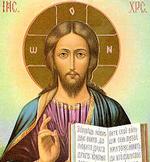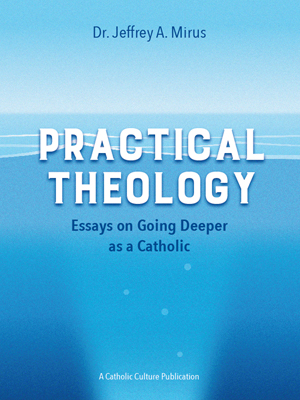Monastery of St. Anthony in Upper Egypt Continues to be an Oasis of Spirituality and Culture
Two detours meet at Za'faranah, a village halfway between Cairo and Al-Ghurdaqah on a strip of land extending from the Red Sea to the Nile: the one on the right leads to the river; the other, on the left, ends 12 km. later in front of St Anthony's Monastery.
When seen from a distance, the monastery, enclosed in a rectangle of massive walls, gives the impression of a misplaced fortress, it seems so improbable that defence would be necessary in a solitude through which only the wind passes and in haste, fearful of the loneliness and silence that isolate it among the scorching dunes.
The retreat of the father of Eastern Monasticism
At the beginning of the Christian era, Abbot Anthony, the father of Eastern Monasticism, withdrew and lived in this, then certainly more desolate, corner content with the refreshment of a cave and the water of a spring which allowed him to moisten the crust of the bread he baked on the hot stones. On the other side of the mountain behind him, was (and is) the entrance to the Qolzum, another cave inhabited by Paul, an older hermit, who grew up in the desert like a solitary palm tree. The two met rarely and only long enough to check that the other was alive. Their longest encounter, according to tradition handed down with devout respect, took place when Anthony buried his friend in a grave dug by a lion that appeared from nowhere precisely to do that work of mercy.
Encouragement to the persecuted Christians
Tradition claims that Anthony occasionally left the desert to encourage the Christians of Alexandria, victims of persecution by Diocletian and Maximian. Once this was over, the hermit could finally settle close to the spring, surrounded by the disciples who eventually attended to his burial (he died at the age of 105) and built next to his grave first a chapel and later a monastery, which has never been abandoned. It is still visited today with admiration and respect, although nothing remains of the first monastic settlement (time does not pass unmarked, even for monasteries).
Its isolated and segregated location, far from the great cities, protected it from the social disputes and upheavals that followed the conquest of Egypt and the affirmation of Islam. What also contributed to its preservation was the ample perimeter of massive watts, currently being pulled down and replaced by others that will allow the monks to enlarge considerably the area created around the building between the sixth and seventh centuries, when it acquired the structure of a real coenobitic monastery, or rather, of a monastery-oasis, also visible elsewhere: monks' dwellings, guest rooms for pilgrims, workshops, the principal church, isolated chapels, vegetable garden, etc.
The central building, to which access is through an entrance guarded by two tall belltowers, consists of a tower-fortress in which the monks shut themselves by pulling up the draw-bridge, the only entrance to their minuscule stronghold, during the marauders' raids. On the other hand, the monastery itself could only be entered by getting into a basket which the monks lowered and raised with a wooden pulley. Even the well-known Cardinal Massaja was admitted in this way when he requested hospitality while on his journey up the Nile to the mission among the Galla in upper Ethiopia.
Thirteenth-century frescoes preserved in the church
A cluster of various buildings, including the church and five chapels, is beautifully arranged around the tower. The church preserves interesting frescoes, restored in the 13th century. The holy knights are depicted in brilliant hues, the ascetics, hermits and monks in darker shades. Fine paintings of the 10th century — St Michael and St Gabriel — are found on the arched entrance to the church, on whose walls, darkened by time and candle-smoke, the writing and images are very hard to pick out; on the other hand, images of the Patriarchs and Bishops of Alexandria: Mark the Evangelist, Peter, Athanasius, etc. can be clearly seen in the chapels.
The monks are keen to undertake the restoration work, but it will be hard for them to find sufficient means given the poverty in which they live and the impossibility of obtaining government subsidies.
Other interesting places to visit are St Anthony's cave and the spring which made the monastery's construction and development possible: it is a tiny but inexhaustible thread of water which trickles from the rock and ends in a basin from which it flows towards the monastery. According to Cardinal Massaja's account, a public fountain once stood in the centre of the courtyard. Today, since the water has been channelled in a more logical and practical way, it has disappeared.
The approximately 40 monks who live in the monastery lead a simple and austere life like that of their confreres in the neighbouring and older coenobium of St Paul: prayer, study, work. The monastery has a rich library in which are kept the manuscripts and sacred texts in Arabic which they study and interpret with unusual skill.
In fact, many of them have completed rigorous studies and have an enviable training in the study of the codices and in icon-painting, traditional activities in all Eastern monasteries.
Despite the austerity of monastic life (prolonged and strict fasting especially during Lent, isolation and poverty), vocations are not lacking, although in comparison with the past a certain decrease can be noted.
Today, most of the monks are young men who speak English with ease and (at least those we met during our visit a few months ago) can make themselves understood in Italian. © L'Osservatore Romano, Editorial and Management Offices, Via del Pellegrino, 00120, Vatican City, Europe, Telephone 39/6/698.99.390.
This item 485 digitally provided courtesy of CatholicCulture.org






